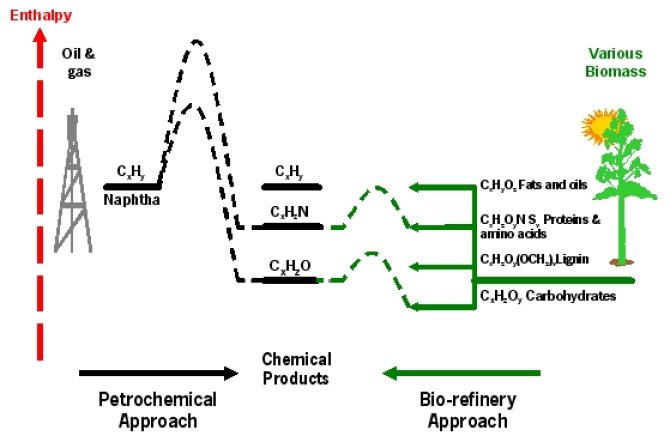
Amino Acids to Products for the Chemical and Plastics Industries

Supervisor: Prof. Johan Sanders
Email: tijs.lammens@wur.nl
Tel. 0031 317 481387
Introduction:
For the production of many industrial chemicals, oil-derived products such as propylene are reacted with co-reagents, for example ammonia, to introduce functional (amine) groups into the molecules. Using ammonia in chemical syntheses requires large amounts of (fossil) energy and raw materials. However, many products formed in plants already contain this functionality, which makes biomass an ideal starting point to by-pass the use of ammonia and thus to save a lot of energy and investments.
Goal:
The goal of this research project is to develop new routes towards industrial chemicals, starting from glutamic acid. The first step from glutamic acid to several industrial chemicals is the removal of the α-carboxylic acid group with the use of the immobilized enzyme glutamic acid α-decarboxylase (GAD).[2]
Fields of interests:
My fields of interest are (green) chemistry, chemical technology, biomass conversion routes and enzymatic reactions.
This project is financially supported by the Netherlands Ministry of Economic Affairs and the ASPECT partner organizations (www.nwo.nl/aspect) through ASPECT, a public-private NWO-ACTS programme (ACTS = Advanced Chemical Technologies for Sustainability)
[1] Scott, E., Peter, F. and Sanders J., Appl. Microbiol. Biotechnol. 75 (2007) 751–762
[2] De Biase, D., Tramonti, A., John, R.A. and Bossa, F., Protein Exp. Purif. 8 (1996) 430-438